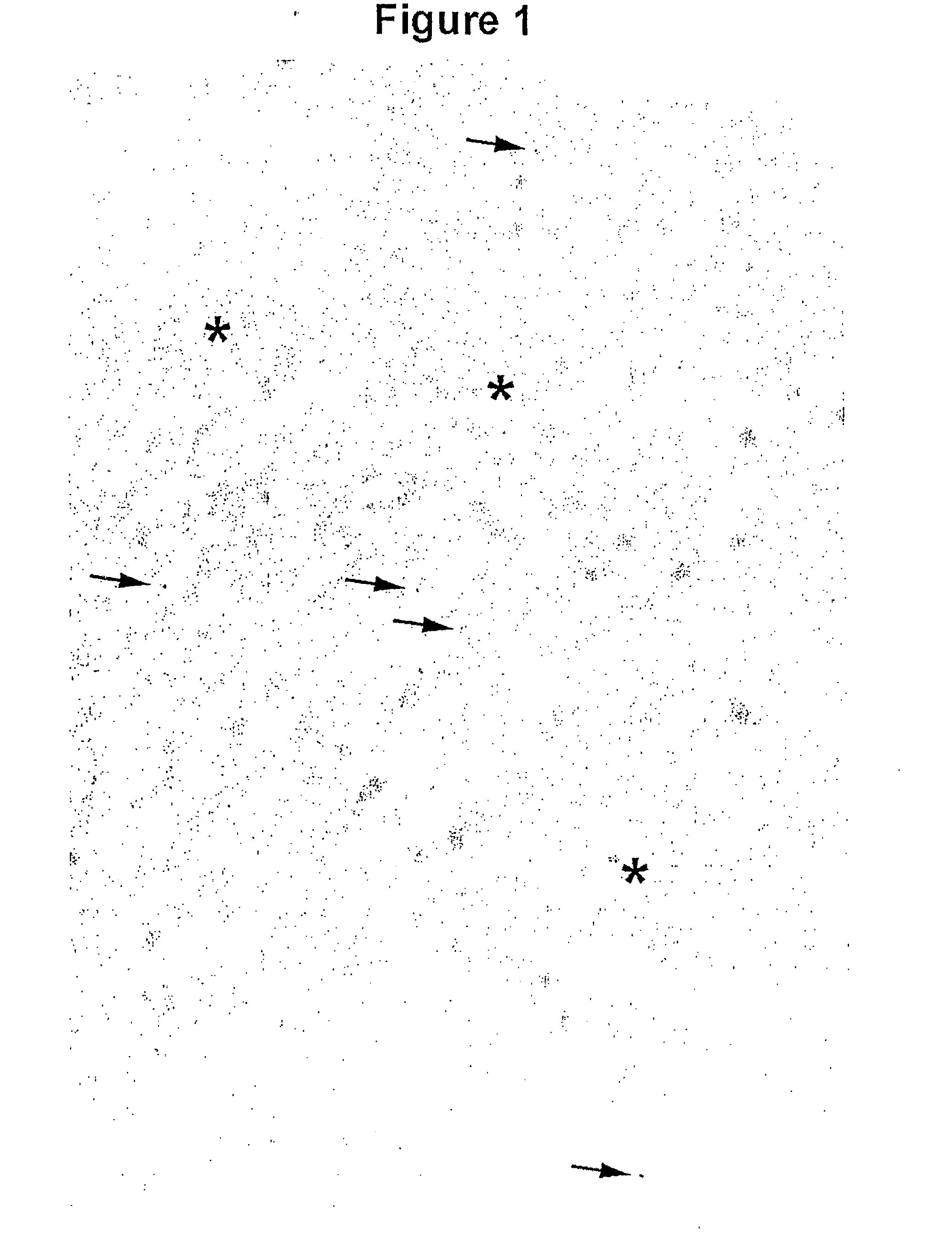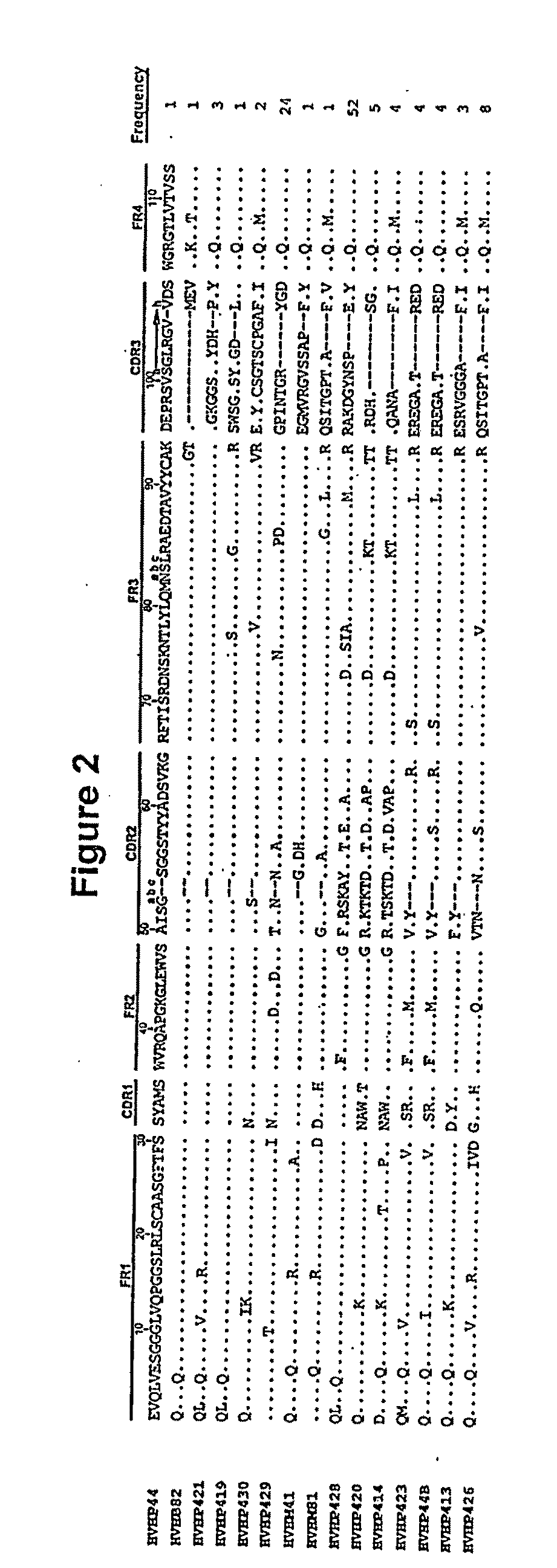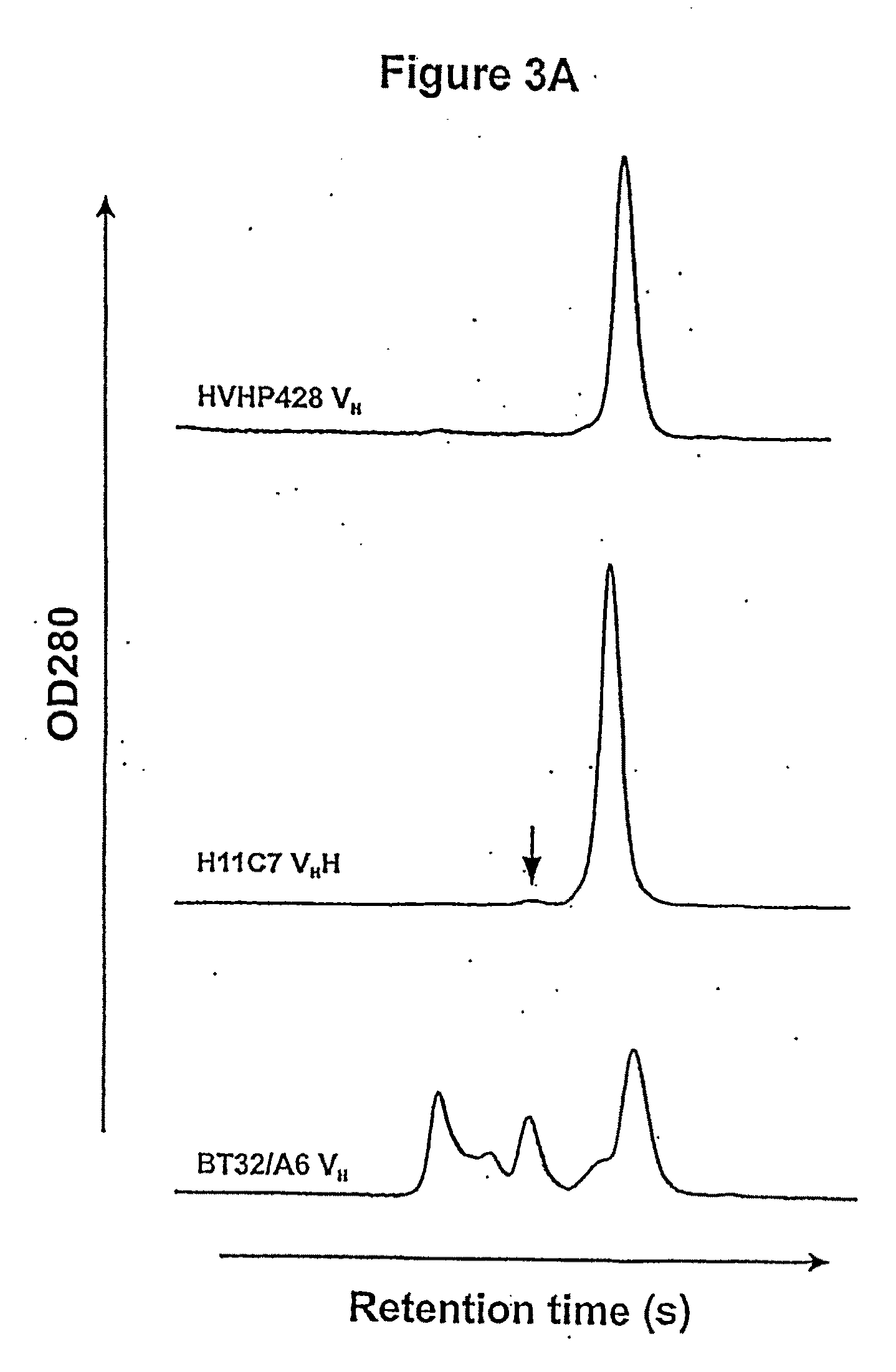Method for isolation of soluble polypeptides
a polypeptide and polypeptide technology, applied in the field of polypeptide isolation, identification and manipulation of polypeptides, can solve the problems of limited human immunotherapy use of vsub>h/sub>hs, and achieve the effects of high throughput screening, improved biophysical properties, and/or stability
- Summary
- Abstract
- Description
- Claims
- Application Information
AI Technical Summary
Benefits of technology
Problems solved by technology
Method used
Image
Examples
examples
Identification and Sequence Analysis of Monomeric Human VHs
[0062]During the course of the construction of fully human and laminated human VH libraries, it was learned that the phages displaying monomeric laminated VHs formed larger plaques on bacterial lawns than phages displaying fully human VHs with aggregation tendencies. Thus, plaque size was used as a means of identifying rare, naturally-occurring monomer VHs from the human VH repertoire (FIG. 1). To this end, a phage library displaying human VHs with a size of 6×108 was constructed and propagated as plaques on agar plates. On the titer plates, the library consisted essentially of small plaques interspersed with some large ones. PCR on twenty clones revealed that the small plaques corresponded to the VH-displaying phages while the large ones represented the wild type phages, i.e., phages lacking VH sequence inserts. None of the VH-displaying phages were found with large plaque morphology. This was not unexpected due to the pauc...
PUM
| Property | Measurement | Unit |
|---|---|---|
| Temperature | aaaaa | aaaaa |
| Temperature | aaaaa | aaaaa |
| Temperature | aaaaa | aaaaa |
Abstract
Description
Claims
Application Information
 Login to View More
Login to View More - R&D
- Intellectual Property
- Life Sciences
- Materials
- Tech Scout
- Unparalleled Data Quality
- Higher Quality Content
- 60% Fewer Hallucinations
Browse by: Latest US Patents, China's latest patents, Technical Efficacy Thesaurus, Application Domain, Technology Topic, Popular Technical Reports.
© 2025 PatSnap. All rights reserved.Legal|Privacy policy|Modern Slavery Act Transparency Statement|Sitemap|About US| Contact US: help@patsnap.com



